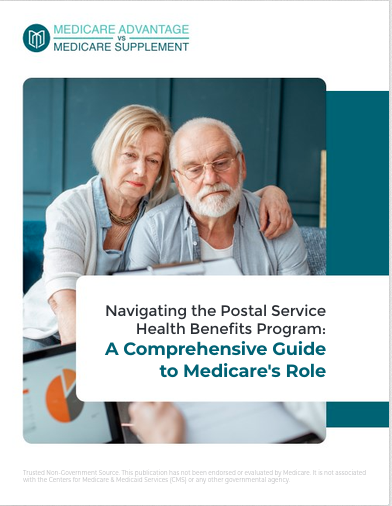Key Takeaways
-
Understanding the “Donut Hole” in Part D
The infamous “donut hole” refers to a coverage gap that can leave you paying more for prescriptions at a certain point. Learning how to avoid or manage it is key to saving money. -
The Importance of Comparing Plans Thoroughly
Not all Medicare Part D plans are the same. Take the time to compare formularies, costs, and restrictions, or you could end up with unexpected out-of-pocket expenses.
Why Part D Can Be Tricky
Let’s face it—shopping for Medicare Part D coverage can be confusing. There are dozens of plans to choose from, each with different coverage rules, formularies (the list of covered drugs), and pricing structures. Worse, there’s the notorious “donut hole” or coverage gap that catches many people off-guard. When you’re budgeting for healthcare costs in retirement, these gaps can cause frustration and, frankly, cost you a lot more than you expect. But don’t worry! I’ll walk you through how to avoid these pitfalls, so you’re not blindsided by high costs or coverage limits.
What is Medicare Part D?
In case you’re still a bit fuzzy on what Medicare Part D actually is, let’s start with the basics. Medicare Part D is the prescription drug coverage part of Medicare, separate from Parts A and B. It’s optional, but highly recommended unless you have some other kind of comprehensive prescription drug coverage. Part D plans are offered by private insurance companies that are contracted with Medicare, and like I mentioned, the plans and pricing can vary.
Breaking Down the Donut Hole
One of the biggest traps with Medicare Part D is the “donut hole”—a coverage gap that many people don’t expect. Here’s how it works in 2024:
-
Deductible Phase:
You pay 100% of your drug costs until you meet the deductible, which can be up to $545 depending on the plan you choose. -
Initial Coverage:
After you hit the deductible, you pay a percentage of your drug costs—usually 25%—while the plan covers the rest. -
Donut Hole (Coverage Gap):
Once your total drug costs hit $5,030, you enter the “donut hole.” In 2024, you’ll pay 25% of the cost for both brand-name and generic drugs while in this phase. Although improvements have been made to shrink this gap over the years, it’s still a substantial amount for some. -
Catastrophic Coverage:
Once your out-of-pocket spending reaches $8,000 in a calendar year, you enter the catastrophic coverage phase. From here on, you’ll pay a much smaller portion of your drug costs—typically around 5%.
It’s easy to get caught off guard by these stages, especially when you’re feeling healthy and don’t anticipate high drug costs. But that donut hole can sneak up on you, so it’s important to plan ahead.
What You Can Do to Avoid Gaps
Now that you understand how the coverage phases work, how can you avoid falling into the donut hole, or at least minimize the impact when you do? Here are some strategies to keep your costs under control.
1. Pick the Right Plan for Your Needs
It sounds obvious, but the first step in avoiding coverage gaps is choosing the right plan in the first place. Don’t just grab the first plan that looks good or assume they’re all the same. They’re not. Look at:
-
Formulary:
Each plan has its own list of covered drugs. If your prescriptions aren’t on the formulary, you could end up paying full price. Make sure all your current medications are covered. -
Pharmacy Network:
Some plans offer better prices if you use their preferred pharmacies. Others might have a mail-order option that saves you money. Make sure you understand where you can go to get the best deal. -
Tiering:
Most plans use a tiered structure for drugs—generics in lower tiers, brand-name drugs in higher tiers. Double-check which tier your prescriptions fall into, as this impacts your copayments.
2. Track Your Drug Costs Throughout the Year
Keeping an eye on your spending is essential if you want to avoid the donut hole. Each month, review your drug costs and check where you are in relation to the coverage phases. Your plan should provide regular updates, but it’s good practice to track this yourself. If you’re getting close to entering the donut hole, talk to your doctor about possible alternatives or generics that could help keep you from tipping over into the gap.
3. Use Generics When Possible
One of the easiest ways to save money and avoid the donut hole is to use generic medications whenever possible. Generic drugs tend to be significantly cheaper than brand-name equivalents and often fall into lower tiers on your plan’s formulary. This means lower copayments or coinsurance and a slower progression toward the donut hole. Always ask your doctor or pharmacist if there’s a generic option available for your prescriptions.
4. Take Advantage of Extra Help Programs
If your income is limited, there are programs that can help you pay for prescription drugs and avoid the coverage gap altogether. One such program is called “Extra Help” through Social Security, which reduces the amount you pay in premiums, deductibles, and copayments. If you qualify, you could avoid the donut hole completely, or at least receive substantial assistance while you’re in it.
Costs You Can Expect
Even with a carefully selected Part D plan, it’s crucial to know what costs you can expect throughout the year, so let’s break them down.
Monthly Premiums
In 2024, the average monthly premium for a Medicare Part D plan is around $55.50. However, your actual premium will depend on your specific plan, and this amount may be higher or lower based on factors like the area you live in or the drugs you take.
Annual Deductibles
The maximum annual deductible for Part D in 2024 is $545, though some plans may have a lower deductible or none at all. Keep in mind that you’ll pay this amount before your plan starts contributing to your drug costs.
Copayments and Coinsurance
Once your deductible is met, you’ll move into the initial coverage phase, where you’ll generally pay around 25% of the cost of your prescriptions. The actual amount you pay varies depending on whether your drug is generic or brand-name and which tier it falls into in your plan’s formulary.
What Happens If You Miss Enrollment
Medicare has specific enrollment periods, and missing these can lead to penalties or delayed coverage. You can first sign up for Part D during your Initial Enrollment Period, which starts three months before the month you turn 65 and lasts for three months after. If you miss this window, there’s an Annual Enrollment Period every year from October 15 to December 7, when you can join or switch Part D plans.
Be careful, though—if you don’t enroll when you’re first eligible and you don’t have other creditable drug coverage, you could be hit with a late enrollment penalty. This penalty is tacked onto your premium for as long as you have Part D, and it can really add up over time.
Open Enrollment Strategy
During open enrollment (October 15 to December 7), it’s a good idea to review your current Part D plan, even if you’re happy with it. Formularies change, as do premiums and copayments, so it’s worth comparing your plan to others. Take advantage of Medicare’s Plan Finder tool to help you see how each plan covers your specific medications. It might seem tedious, but a little effort could save you hundreds of dollars over the course of a year.
Planning for 2025
As 2025 approaches, it’s a great time to reassess your Medicare Part D plan, especially if you’re already enrolled or turning 65 this year. Make reviewing your prescription drug coverage a priority so you can stay ahead of any changes. With the new $2,000 out-of-pocket cap on drug costs coming into effect, you’ll want to ensure you’re taking full advantage of the updates. By carefully selecting the right plan, tracking your drug spending, and exploring savings opportunities, you can avoid the “donut hole” and unexpected expenses while keeping your healthcare costs manageable.
Take the Time to Review, Compare, and Save
Navigating Medicare Part D can feel like a maze at times, but you don’t have to get lost in it. Taking the time to research your options, stay on top of your spending, and leverage available programs or alternatives can help you avoid gaps in coverage and unexpected costs. Plan smart, review annually, and you’ll be well-prepared for whatever your healthcare needs throw at you.










